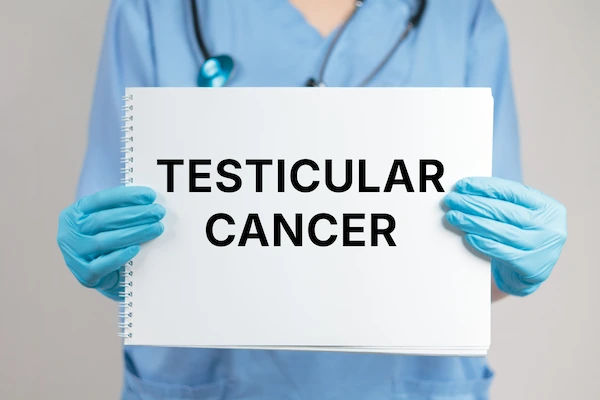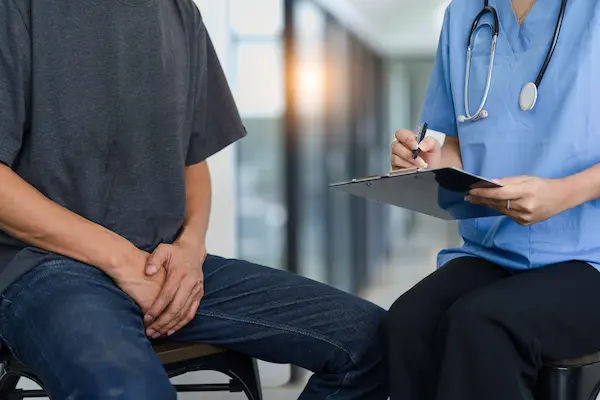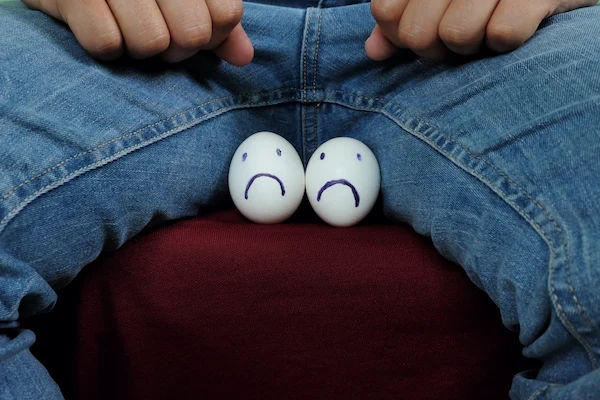Testicular Cancer: A Comprehensive Guide for Men's Health
Know about the testicular cancer, what it is, risk, staging of cancer, diagnosis, treatment options and more
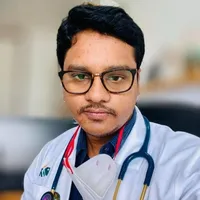
Written by Dr. M L Ezhilarasan
Reviewed by Dr. D Bhanu Prakash MBBS, AFIH, Advanced certificate in critical care medicine, Fellowship in critical care medicine
Last updated on 6th Oct, 2025
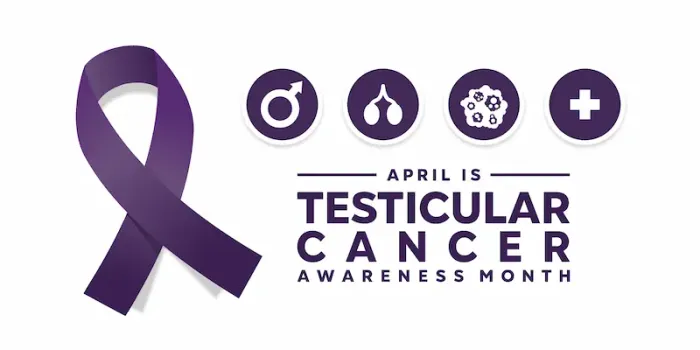
Introduction
Testicular cancer is a topic many men shy away from, but it’s one of the most important health conversations they can have. While relatively rare compared to other cancers, it is the most common cancer in young and middle-aged men between the ages of 15 and 35. The good news is that testicular cancer is also one of the most treatable and curable forms of cancer, especially when caught early. This guide aims to demystify the condition, empower you with knowledge, and replace fear with actionable steps. We’ll walk you through everything from recognising the first signs to understanding treatment options and life after recovery. Knowing what to look for and when to act could make all the difference.
What is Testicular Cancer?
Testicular cancer occurs when cells in one or both testicles become malignant, meaning they grow uncontrollably. To understand this, it's helpful to know what the testicles are for.
Consult a Oncologist for Personalised Advice
Understanding the Testicles and Their Function
The testicles, or testes, are two oval-shaped organs located inside the scrotum, a loose bag of skin below the penis. They have two primary functions: producing sperm for reproduction and generating testosterone, the primary male sex hormone responsible for libido, muscle mass, and bone density.
How Testicular Cancer Develops
Cancer typically begins in the germ cells—the cells responsible for producing sperm. Over 90% of testicular cancers start here, leading to what are known as germ cell tumours. These are categorised into two main types: seminomas and non-seminomas, which grow and spread differently and may require slightly different treatment approaches. Understanding this distinction is crucial for oncologists to create an effective treatment plan.
Recognising the Signs: Symptoms of Testicular Cancer
Early detection is key to the high success rate of treatment. Being aware of the symptoms allows for prompt medical attention.
The Most Common Warning Signs
The most frequent first sign is a change in the feel of the testicle. This often includes:
1. A painless lump or swelling in either testicle. This is the most common finding.
2. A feeling of heaviness or aching in the lower abdomen or scrotum.
3. A change in the size or shape of the testicle.
4. A dull ache in the groin or lower abdomen.
Symptoms That May Indicate Spread
In some cases, the first signs may appear if the cancer has spread to other parts of the body. These can include:
1. Lower back pain (indicating spread to lymph nodes).
2. Shortness of breath or chest pain (indicating spread to the lungs).
3. Headaches or confusion (indicating spread to the brain).
What Testicular Cancer Does NOT Feel Like
It's also important to know that many lumps and pains are not cancer. Conditions like epididymitis (an infection), varicoceles (enlarged veins), or harmless cysts are common. However, any new lump, swelling, or pain should be evaluated by a doctor.
A key differentiator is that testicular cancer lumps are typically hard and fixed to the testicle itself, while a common spermatocele (cyst) is usually smooth, fluid-filled, and separate from the testicle. If you notice any unusual changes, consult a doctor online with Apollo24|7 for an initial evaluation to determine if an in-person visit is needed.
Am I at Risk? Key Risk Factors Explained
While any male can develop testicular cancer, certain factors increase the risk.
Uncontrollable Risk Factors (Age, Race, Family History)
1. Age: Young and middle-aged men (15-35) are at the highest risk, though it can occur at any age.
2. Race and Ethnicity: White men have a significantly higher risk than Black or Asian men.
3. Family History: Having a father or brother who had testicular cancer increases your risk.
The Most Significant Risk Factor: Cryptorchidism
This is the medical term for an undescended testicle. This is the strongest known risk factor. Even if surgery (orchiopexy) is performed to correct it in childhood, the risk remains elevated for both testicles.
Other Potential Risk Factors
Other factors include HIV infection, a personal history of testicular cancer (in the other testicle), and certain genetic conditions like Klinefelter syndrome.
Diagnosis: The Steps to Getting Answers
If a doctor suspects testicular cancer, they will follow a standard diagnostic pathway.
The Physical Exam and Patient History
The doctor will carefully feel the testicles for any lumps, swelling, or tenderness and ask about your symptoms and health history.
The Crucial Role of Testicular Ultrasound
This is the most important test. An ultrasound uses sound waves to create an image of the scrotum and testicles. It can definitely determine if a lump is solid (a potential tumour) or fluid-filled (a likely benign cyst).
Blood Tests for Tumour Markers
Testicular cancers often release certain proteins and enzymes into the blood called tumour markers. Tests will check for elevated levels of Alpha-fetoprotein (AFP), Human chorionic gonadotropin (HCG), and Lactate dehydrogenase (LDH). These help diagnose the cancer type and monitor treatment response.
Further Imaging (CT Scans) for Staging
If cancer is confirmed, a CT scan of the abdomen, pelvis, and chest is done to see if the cancer has spread to lymph nodes or other organs.
Get Your Symptoms Assessed
Staging Testicular Cancer: What Does It Mean?
Staging describes how far the cancer has spread and guides treatment.
1. Stage I: Cancer is confined to the testicle.
2. Stage II: Cancer has spread to nearby lymph nodes in the abdomen.
3. Stage III: Cancer has spread to distant lymph nodes or organs like the lungs or liver.
Effective Treatment Options for Testicular Cancer
Treatment is highly effective and depends on the type and stage of the cancer.
Surgery: The Primary Treatment (Radical Inguinal Orchiectomy)
The first step for nearly all testicular cancers is surgery to remove the affected testicle through an incision in the groin. This is both diagnostic and therapeutic. For early-stage cancer, this may be the only treatment needed.
Radiation Therapy
This uses high-energy rays to kill cancer cells. It is most effective against seminomas and may be used after surgery to prevent recurrence.
Chemotherapy
Chemotherapy uses drugs to kill cancer cells that may have spread. It is a cornerstone of treatment for advanced-stage cancer and is very effective for both seminoma and non-seminoma types.
Making a Treatment Decision
Your medical team will discuss the benefits and potential side effects (like fertility issues) of each option. If your diagnosis is complex, seeking a second opinion from a specialist via Apollo24|7 can provide clarity and confidence in your treatment plan.
## H2: Life After Treatment: Survival and Follow-Up
### H3: The Excellent Prognosis and Survival Rates
The outlook for testicular cancer is very positive. The overall 5-year survival rate is over 95%. For Stage I cancer, the survival rate is接近 99%.
### H3: Long-Term Follow-Up Care
After treatment, regular follow-ups with blood tests and scans are crucial to ensure the cancer has not returned. This schedule becomes less frequent over time.
### H3: Fertility and Sexual Health Considerations
Treatments can affect fertility. Men are strongly encouraged to discuss sperm banking (cryopreservation) before starting treatment. Removal of one testicle usually does not affect the ability to have an erection or have children, as the remaining testicle can produce sufficient testosterone and sperm.
Prevention and Early Detection: Your Best Defense
There is no known way to prevent testicular cancer, but early detection through self-awareness is your most powerful tool.
The Importance of Monthly Testicular Self-Exams (TSE)
Performing a monthly self-exam helps you become familiar with what's normal for you, making it easier to spot any changes early. The best time is during or after a warm shower when the scrotal skin is relaxed.
A Step-by-Step Guide to Self-Examination
1. Stand in front of a mirror. Look for any swelling on the scrotum.
2. Examine each testicle separately. Place your index and middle fingers underneath the testicle and your thumbs on top.
3. Gently roll the testicle between your thumbs and fingers. You should feel a soft, tube-like structure on top and at the back—this is the epididymis, which is normal.
4. Feel for any hard lumps, smooth rounded masses, or any change in the size, shape, or consistency of the testicle.
5. Remember: It's normal for one testicle to be slightly larger or hang lower than the other.
Conclusion
Knowledge is power when it comes to your health. Testicular cancer, while a serious diagnosis, does not have to be a frightening one. The medical community has made tremendous strides in treating it successfully. By understanding the risk factors, recognising the symptoms early, and taking proactive steps like monthly self-exams, you are taking control of your health. Remember, noticing a change and acting on it quickly is the single most important thing you can do. If you have any concerns at all, the best course of action is to speak with a healthcare professional. Your health is worth it.
Consult a Oncologist for Personalised Advice
Consult a Oncologist for Personalised Advice

Dr Sunita Samleti
Oncologist
18 Years • M.D. (Pathology)- TN Medical College, Mumbai University, Mumbai, Mar 2005 M.B.B.S. Grant Medical College, Mumbai University, Mumbai, Oct 1999
Chinagadila
Apollo Hospitals Health City Unit, Chinagadila

Dr Gowshikk Rajkumar
Oncologist
10 Years • MBBS, DMRT, DNB in Radiation oncology
Bengaluru
Apollo Clinic, JP nagar, Bengaluru

Dr. Sanchayan Mandal
Oncologist
17 Years • MBBS, DNB Raditherapy, DrNB Medical Oncology
East Midnapore
VIVEKANANDA SEBA SADAN, East Midnapore
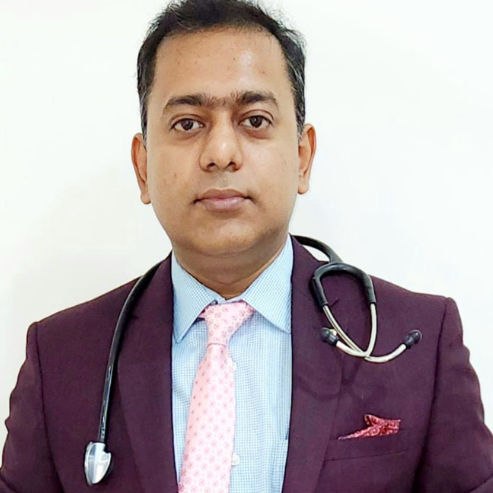
Dr.sanchayan Mandal
Oncologist
17 Years • MBBS, DrNB( MEDICAL ONCOLOGY), DNB (RADIOTHERAPY),ECMO. PDCR. ASCO
Kolkata
Dr. Sanchayan Mandal Oncology Clinic, Kolkata
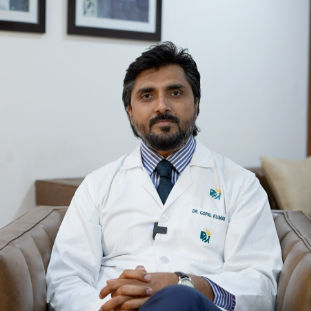
Dr. Gopal Kumar
Head, Neck and Thyroid Cancer Surgeon
15 Years • MBBS, MS , FARHNS ( Seoul, South Korea ), FGOLF ( MSKCC, New York )
Delhi
Apollo Hospitals Indraprastha, Delhi
(25+ Patients)
Consult a Oncologist for Personalised Advice

Dr Sunita Samleti
Oncologist
18 Years • M.D. (Pathology)- TN Medical College, Mumbai University, Mumbai, Mar 2005 M.B.B.S. Grant Medical College, Mumbai University, Mumbai, Oct 1999
Chinagadila
Apollo Hospitals Health City Unit, Chinagadila

Dr Gowshikk Rajkumar
Oncologist
10 Years • MBBS, DMRT, DNB in Radiation oncology
Bengaluru
Apollo Clinic, JP nagar, Bengaluru

Dr. Sanchayan Mandal
Oncologist
17 Years • MBBS, DNB Raditherapy, DrNB Medical Oncology
East Midnapore
VIVEKANANDA SEBA SADAN, East Midnapore

Dr.sanchayan Mandal
Oncologist
17 Years • MBBS, DrNB( MEDICAL ONCOLOGY), DNB (RADIOTHERAPY),ECMO. PDCR. ASCO
Kolkata
Dr. Sanchayan Mandal Oncology Clinic, Kolkata

Dr. Gopal Kumar
Head, Neck and Thyroid Cancer Surgeon
15 Years • MBBS, MS , FARHNS ( Seoul, South Korea ), FGOLF ( MSKCC, New York )
Delhi
Apollo Hospitals Indraprastha, Delhi
(25+ Patients)
More articles from Testicular Cancer
Frequently Asked Questions
1. Does testicular cancer cause pain?
While it can sometimes cause a dull ache or feeling of heaviness, a painless lump is the most common symptom. Any persistent pain or discomfort in the testicles should be checked by a doctor.
2. Can I still have children after treatment for testicular cancer?
In many cases, yes. The removal of one testicle usually does not impact fertility. However, chemotherapy and radiation can affect sperm production. Discussing sperm banking before treatment begins is a critical step for men who may want children in the future.
3. Is testicular cancer hereditary?
Having a close relative (father or brother) with testicular cancer does increase your risk, but most men who get it have no family history. It's important to be aware of your family health history.
4. What is the difference between a testicular cancer lump and a cyst?
A cancerous lump is typically firm, fixed, and feels like it's part of the testicle. A common cyst (spermatocele) is usually smooth, feels separate from the testicle, and is often filled with fluid. Only a doctor, often using an ultrasound, can make a definitive diagnosis.
5. Will I need testosterone replacement therapy after surgery?
Most men who have one testicle removed do not need testosterone replacement, as the remaining testicle can produce enough hormone. If both testicles are removed, testosterone replacement therapy will be necessary for life.

